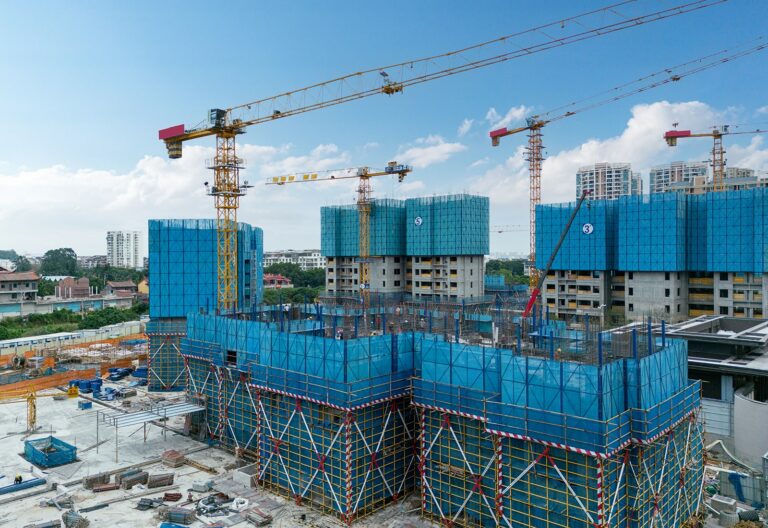When you first discovered the USCIS EB-5 visa program for immigrant investors, you were probably excited and inspired by this path to permanent residency in the United States. As you began to dig deeper into the rules, regulations, and requirements, you may have been a tad discouraged by the volume of boxes to check and goals to achieve. One of those hurdles toward your U.S. green card is the Form I-526 or Form I-526E. However, with a little guidance, some helpful hints, and solid advisors and partners, you can achieve your American dream with confidence.
At first glance, the Form I-526 and I-526E seem incredibly complex. And while they do indeed require a lot of dedication on your part to ensure accuracy and thorough completion, they don’t have to be a stumbling block on your path to residency in America. In this article, we’ll break it all down for you. We’ll cover what these forms are and what they achieve for you, the filing information requirements, timing and procedures, fees, and potential pitfalls. We’ll also touch on how the right partners, including a regional center like Atlanta Partners Group, can help ensure success on your EB-5 visa goals.
Half the battle of any long process is understanding it and knowing what to expect. By the end of this article you’ll be in a great position to move forward on your I-526 filing. So let’s get started with an overview of the forms themselves, including who should file a Form I-526 and who should file a Form I-526E.
You’re never alone on your EB-5 visa journey when you partner with Atlanta Partners Group. Let’s work together toward your future.
EB-5 Visa Essentials: Form I-526 vs. Form I-526E
Like any program involving governments or business, there’s a lot of paperwork – and the EB-5 visa program is no different. The I-526 is a filing that’s required at the beginning of your EB-5 adventure, but which form do you use?
What is the Form I-526?
Form I-526, also known as the Immigrant Petition by Alien Investor, is essentially your first step towards securing an EB-5 visa. This form is a petition to the United States Citizenship and Immigration Services (USCIS) to demonstrate that you are investing the required amount of capital into a new commercial enterprise. You’ll show that your investment will create at least ten full-time jobs for U.S. workers, one of the big program goals. Basically, it’s your ticket to proving that your investment meets the stringent requirements set by the EB-5 program.
Introducing Form I-526E
Form I-526E is a more recent addition, specifically designed for investors who choose to go through an EB-5 regional center (more on that below). While it serves a similar purpose to Form I-526, the I-526E streamlines the process for those investing in projects managed by USCIS-designated regional centers such as Atlanta Partners Group. These centers are responsible for ensuring that the investments meet the program’s requirements, which can simplify the documentation and compliance process for investors. This form was added because of the regional center program’s popularity and surging applications for immigrant investors like you who are choosing to partner with them.
Direct Investment vs. Regional Center Investment: Which Path to Choose?
Understanding the key differences between Form I-526 and Form I-526E starts with recognizing the fundamental distinction between direct investments and EB-5 regional center investments
Direct Investment: Total Control, Total Responsibility
When you go the direct investment route, you’re taking the reins of a new commercial enterprise. This means you must be actively involved in the management and operations of the business, overseeing everything from daily decisions to long-term strategies. If this is you, then the Form I-526 is the form you’ll need to complete. It requires extensive and detailed information about your business, your personal direct involvement, and the specifics of how the business you’re establishing will check all of the EB-5 visa boxes.
Regional Center Investment: A Streamlined Path
On the other end of the spectrum, investing through a regional center is a more hands-off approach. Regional centers like Atlanta Partners Group manage EB-5 projects and ensure compliance with USCIS requirements. This can be especially beneficial if your goal in life is not to be involved in the day-to-day operations of the business. Form I-526E was created to conform to this model, simplifying the petition process by leveraging the regional center’s pre-approved status and existing compliance frameworks.
Key Differences Between Form I-526 and Form I-526E
Here’s a short and sweet breakdown of the main differences between the two USCIS forms and the types of investments associated with each.
Nature of Investment
I-526: Used for EB-5 direct investments where the investor takes an active role in the business.
I-526E: Designed for EB-5 regional center investments, allowing for a more passive investment role.
Documentation Requirements
I-526: Requires comprehensive details about the new commercial enterprise, including business plans, financial projections, and evidence of how you plan to satisfy the EB-5 job creation criteria.
I-526E: Leverages the regional center’s established documentation, reducing the burden on individual investors.
Management and Operational Control
I-526: Investors must demonstrate their active involvement in managing the business.
I-526E: Investors benefit from the regional center’s management, focusing on the investment aspect without daily operational business responsibilities.
When you understand these key differences and the specific purposes of each form, it will help you make an informed decision about which path aligns best with your EB-5 goals and capabilities. Whether you choose the hands-on approach of a direct business investment or the streamlined path through a regional center project, the Form I-526 or I-526E is a crucial part of your success in the EB-5 visa program, and ultimately your future in the United States. Now let’s take a closer look at the purpose of the I-526 forms and what requirements they have.
Give yourself the best shot at EB-5 visa success with a strategic partnership.
Details, Documents, and Fees: The Forms I-526 and I-526E in the EB-5 Visa Process
Think of Forms I-526 and I-526E as the gatekeepers of your EB-5 visa application. They’re the initial hurdle you need to clear to demonstrate that you’re making a qualifying investment in the U.S. economy. These forms provide the U.S. Citizenship and Immigration Services (USCIS) with detailed evidence of your EB-5 investment project and its potential economic impact. Without these forms, you’re not just stalled—you’re stuck. So let’s break down each form in a high-level overview.
I-526 Form and Function: What to Expect and Why
Both I-526 forms serve the same overarching purpose: proving your eligibility for the EB-5 visa program. However, the way they go about it differs based on whether you’re making a direct investment or investing through a regional center.
Form I-526: Demonstrating Eligibility for Direct Investors
Form I-526 is your key to the direct investment route for EB-5 visa program investors. If you’re someone who thrives on hands-on involvement and wants to manage your own business in the U.S., this is the form for you. Here’s what it involves:
Detailed Business Plan: You’ll need to submit a comprehensive business plan that outlines how your EB-5 investment will create at least ten full-time jobs for U.S. workers. This plan should include market analysis, financial projections, and operational strategies. This is critical, so don’t hold back on the details here. Your business plan needs to be solid, convincing, and realistic.
Proof of Investment Funds: USCIS needs to see that your investment capital is legitimate. This means providing detailed documentation tracing the source of your funds, ensuring they’re lawfully obtained. Hiccups in your paper trail can lead to delays – or worse – denial of your I-526 petition.
Job Creation Evidence: You must demonstrate how your investment will satisfy the EB-5 job creation requirements. This also involves projecting the number of jobs your business will create directly (meaning employees your business personally has on the payroll) and providing evidence that these jobs will be sustained over time.
Management Role: Because of the nature of direct investment, the Form I-526 requires you to prove that you’ll be actively involved in the day-to-day management of the business. This might include your role in strategic planning, operational decisions, and overall management.
Form I-526E: Simplifying the Process for Regional Center Investors
Form I-526E, on the other hand, is tailored for those who are going after the more hands-off approach by investing through an EB-5 regional center. (Recall that regional centers are USCIS-approved entities that manage EB-5 visa specific projects.) Here’s how Form I-526E makes your life easier:
Streamlined Documentation: While you still need to provide proof of your investment funds, the burden of demonstrating job creation falls largely on the regional center. They’ve already done much of the legwork, ensuring the project meets EB-5 requirements.
Reduced Management Responsibility: One of the biggest advantages of filing Form I-526E is that you don’t need to be involved in the daily management of the project. The regional center handles this, making it an attractive option if you prefer a passive investment. So for this form, proving direct involvement is a non-issue.
Pre-Approved Partners: Regional centers have projects that are designed to meet EB-5 criteria, and they’ve gone through the approval process with the USCIS as an entity. This means you can invest with greater confidence, knowing that the project is structured to fulfill all necessary requirements.
Your Green Card is in the Details: Info Required for Form I-526 and I-526E
Filing the USCIS Form I-526 or I-526E petition is a detailed process that requires lots of documentation from you as the investor. U.S. Immigration demands comprehensive information to ensure that your investment is legitimate, will generate the required jobs, and meets all regulatory requirements. Here’s a breakdown of the essential information you need to gather and present.
Personal Information
The first section of both I-526 forms focuses on your personal details. Accurate and thorough information here and throughout the rest of the petition creates a foundation for smooth processing and, hopefully, faster approval.
Basic Information: Include your full name, date of birth, and place of birth. Ensure that these details match your identification documents to avoid any discrepancies.
Contact Information: Provide your current address, phone number, and email address. Keeping this information updated is critical for timely communication and responding to any inquiries from immigration.
Passport Details: Submit a copy of your passport, including all relevant pages. This serves as proof of your identity and nationality.
Immigration History: Detail your previous immigration history, including any visas you have held and travel records. Transparency in your immigration history is vital for building trust with USCIS, so don’t try to skip any details. If they find out you were deliberately (or even accidentally) deceptive, you might be kissing your green card goodbye.
Family Information: Include information about your spouse and children, if applicable, that will be joining you in the United States. This helps USCIS understand your family structure and any dependents who will be included in your application.
Investment Information
This section of the I-526 is critical for demonstrating that your project funds are legitimately sourced and that your investment will meet EB-5 requirements.
Proof of Funds: You must provide clear documentation tracing the source of your investment funds. This can include bank statements, tax returns, evidence of business ownership or asset sales, or loan information for EB-5 financing for real estate.
Legal Path of Funds: USCIS requires a detailed account of how the funds were accumulated and transferred. This requires showing the legal path of funds from your source account to the account used for the EB-5 investment. Clarity is key here.
Affidavits: In some cases, affidavits from financial institutions or legal entities can help corroborate the legality of your funds. Ask your advisory team ahead of time if they think this will be helpful, and secure those documents as early as possible to avoid processing delays.
Minimum Investment: The minimum required investment for an EB-5 visa investor is $1.05 million, or $800,000 if investing in a Targeted Employment Area (TEA). Ensure that your investment meets this threshold and your banking information clearly shows that total or more being invested.
Proof of Investment: Documentation showing that the investment has been made or is in the process of being made is required by the USCIS. This can include wire transfer receipts, bank statements, and investment agreements.
Business Information
This I-526 form section is where you detail the commercial enterprise you’re investing in and how it will meet the job creation requirements. If you’re a regional center investor, this will probably be the easiest part of the form. Ask your regional center for the documents required. If you’re a direct investor, this will likely be the most complicated part. Either way, for easiest I-526 processing, take your time and make sure all the questions are answered, boxes checked, and documents attached.
I-526 Filers: All the Details
A direct investor submitting an I-526 should get ready for a hefty workload for this part of the petition. Putting in the work ahead of time should help move processing along faster. Here’s what you should plan for.
Your comprehensive business plan should outline the nature of the business, market analysis, competitive landscape, and financial projections. This plan needs to be thorough and well-researched to demonstrate the viability of the enterprise. U.S. Immigration will need to be convinced of the project’s value, survivability, and ability to create the required jobs.
Be sure to include a timeline of key milestones and expected results with your I-526 petition. This helps USCIS understand the progression and development of the investment, and to show how it will produce the required outcomes in the timeline required. Detail how the business will create at least ten full-time jobs for U.S. workers. This should include job titles, descriptions, and the expected timeline for hiring. Be specific. Provide evidence such as payroll projections, sample employment contracts, and organizational charts to support your job creation projections.
Organizational documents should also be included with your immigrant investor petition. This will cover the legal structure, ownership information, and financial statements. These documents include articles of incorporation, partnership agreements, and operating agreements. They should clearly delineate the ownership structure, listing all owners and their respective shares in the business. Finally, be prepared to submit financial statements that detail the current financial status of the business, including balance sheets, income statements, and cash flow statements.
Regional Center Information (for Form I-526E)
If you’re investing through a regional center, this section simplifies the process by leveraging the regional center’s pre-approved status and documentation. This eases up on your workload, but don’t let your due diligence slip as you’re still responsible for accurate and thorough submission of the petition.
This section will require regional center information. The Regional Center’s certification, including details of the regional center, its USCIS approval status, and any relevant identification numbers, should be included. The immigrant investor will also need to provide the details on the specific project within the regional center that you’re investing in. This should include the nature of the project, its location, and its goals.
The economic impact of the project is also important to this petition. Include an economic impact analysis showing how the project will benefit the local economy and meet EB-5 job creation requirements. (Your regional center will assist with this.) Finally, be prepared to submit documentation demonstrating your affiliation with the regional center and the specific investment project. This might include investment agreements, partnership agreements, and documented evidence of your financial contribution. All in all, the Form I-526E will be less complex and less time intensive compared to the original Form I-526.
Your Mission: Complete and Accurate Information
Accuracy and completeness are the primary goals of an EB-5 visa investor when filing Form I-526 or I-526E. Any discrepancies or missing information can lead to processing delays, requests for additional evidence (RFEs), or even petition denials. Here’s why this matters:
Avoiding Delays: Incomplete forms are the primary reason for RFEs, which can significantly delay the processing time. That can throw a monkey wrench into your timeline and green card goals. By ensuring all information is accurate and complete, you reduce the risk of such setbacks.
Building Credibility: Accurate documentation builds credibility with USCIS, demonstrating that you are a serious and compliant investor. Don’t let little details end up creating big problems for you and your family. Be thorough and honest.
Preventing Denials: The ultimate goal is to secure your EB-5 visa and green card. Submitting thorough and precise information from the start minimizes the risk of denials and smooths your path to approval. Set yourself up for success with due diligence and double and triple checking information.
Smart investors reduce their investment risk with solid plans and strong partners. Let Atlanta Partners Group be the reason you’re confident in your EB-5 journey.
Filing Fees for Form I-526 and I-526E
Timely processing requires submitting the proper amount at the proper time in the proper way when it comes to I-526 fees. You as an EB-5 visa investor should understand and prepare for these various costs, including filing fees and additional expenses, which can add up quickly. Here’s a concise breakdown of what you need to budget for.
Current Filing Fees for Each Form
As of the latest updates, the paper filing fee for both Form I-526 and Form I-526E is $11,160. The Form I-526E currently requires an additional and separate $1,000 fee as per the EB-5 Reform and Integrity Act of 2022. This fee is payable to the USCIS at the time of submitting your application. How you pay can depend on whether you are in the U.S. or outside the U.S. at the time of submission. It’s crucial to stay updated on any changes to these fees, as USCIS periodically adjusts them and you don’t want to risk processing delays over an incorrect fee amount. Stay current by checking the fee schedule here. As always, double check everything with your EB-5 legal and compliance team.
Additional Costs to Consider
Beyond the filing fees, which are not insignificant, there are other costs you should anticipate. First and foremost is legal fees. Hiring an immigration attorney well versed in the EB-5 visa program is highly recommended to ensure your application is accurate and complete. Legal fees can range from $10,000 to $25,000, depending on the complexity of your case and the attorney’s experience. Likewise, if you’re working with EB-5 consultants or advisors, factor in their fees, which can vary widely.
If any of your documents need translation or special preparation, these translation services will incur additional costs so don’t forget to consider those costs as well. For consular processing, you may need to travel for interviews or other requirements. Depending on where you live, these transportation costs can also add up.
Budgeting for the Application Process
You’re already investing heavily in your EB-5 visa journey with your initial EB-5 investment amount. But don’t let other costs take you by surprise. Careful budgeting is crucial for a smooth EB-5 visa petition and application process. By anticipating and allocating funds for both the filing fees and the additional costs, you can avoid unexpected financial strain. You’ll also ensure that you have the resources you need to see your application through to approval and keep you and your family in stable financial condition during the process. Proper financial planning helps maintain focus on your ultimate goal: securing your EB-5 visa and achieving your dream of U.S. residency. Your green card is waiting for you!
Expected Wait Time for Approval and How to Avoid Delays
Navigating the EB-5 visa program requires patience, diligence, and a careful eye on details. The wait time for processing and approval of Forms I-526 and I-526E can be substantial, with the I-526 generally taking longer due to its more individualized nature. Here’s what you need to know about the expected timelines and how to manage them effectively.
Average Processing Times for I-526 and I-526E
The average processing time for Form I-526 and I-526E typically ranges from 18 to 24 months. However, keep in mind that your specific timeline will be unique to you and can fluctuate based on various factors. Some of these factors are within your control, and some are not.
The volume of petitions being submitted for processing is one of those out-of-your-control influences.A high volume of applications can lead to longer wait times as the USCIS processes each petition in the backlog. Coming from a country with a high demand for visas {like India and China) can also increase your wait time. On the other hand, submitting a complete and accurate application can help avoid delays caused by RFEs (Requests for Evidence) or other issues. That one is all on you as the investor, along with your team.
If you’re investing in a TEA (Targeted Employment Area) you may be able to take advantage of expedited processing. Rural TEA projects can give an immigrant investor who wants to move as quickly as possible toward permanent residency the opportunity to take advantage of “priority processing.” They also offer a 20% set aside, meaning you can take part in the 20% of visas that are reserved each year for the investor that chooses a rural TEA project. We can thank the EB-5 Reform and Integrity Act of 2022 for improving the odds of faster petition approval through this set aside visa program! If this sounds like it’s for you, be sure to contact Atlanta Partners Group today, as we specialize in rural TEA projects.
When it comes to managing this timeline, patience and diligence are the name of the game. First, regularly check the status of your petition through the USCIS online portal. This helps you to stay updated on any changes or requests for additional information. Also, you’ll want to stay in touch with USCIS by responding promptly to any requests or notices. This helps ensure your application moves forward without unnecessary delays. Essentially, make a decision to be proactive in managing the process. With a little extra patience, the right project, and the right partner, you can navigate the EB-5 vis program journey more smoothly and with greater confidence, from I-526 to permanent residency.
Atlanta Partners Group has the proven track record, experience, and projects for EB-5 investor success. Schedule a strategy meeting today.
Common Errors and How to Avoid Them
There are many reasons why a Form I-526 or I-526E might get delayed. But user error doesn’t have to be one of them. Common errors can lead to delays, RFEs (Requests for Evidence), or even denials. Give yourself the best chance possible for a smooth approval by being familiar with typical mistakes and how to avoid them.
Most Errors are Avoidable Mistakes
The simple truth is that most errors that create a delay in an investor’s I-526 petition are omissions and inaccuracies.
Incomplete Information
This is a common error that should never happen. Omitting critical personal, investment, or business details will lead to RFEs and their associated delays. Ensure that all sections of the form are filled out comprehensively. Likewise, failing to provide all necessary supporting documents, such as proof of funds, legal source of funds, business plans, organizational documents, or identification documents, can stall your application. Have your professional and legal team double check that all required documents are included, or you’ll be left spending your valuable time on RFEs.
Inaccurate Data
Data entry errors – simple mistakes like typos, incorrect dates, or inconsistent information across documents – can cause significant issues. They are completely avoidable with proper review, so make sure your petition doesn’t become a victim of poor attention to detail. You’ll also want to make sure that all your financial information is correct. Misreporting financial details or the source of funds – even if it’s an honest mistake – can raise red flags with USCIS and delay processing. Lastly, all documents need to be properly translated into English. Make sure your docs go through a reliable and skilled translator, or they may be rejected or cause delays.
Strategies for Ensuring Accuracy and Smooth Processing
The good news is that you can avoid these errors and omissions. Let’s go over strategies to keep your documents accurate and complete, positioning your application for smooth processing and approval.
Double-Checking Entries
The first and most obvious way is a thorough review. Before submission, meticulously review every section of the form and all supporting documents for accuracy and completeness. Ensure consistency across all documents and forms to avoid discrepancies. Have three or even four pairs of eyes on your docs to make sure everything is in order.
Consulting with Experts
Your team is your best bet to help you avoid errors and omissions. An experienced immigration attorney can guide you through the process, help you avoid common mistakes, and ensure that your application is robust. They’ll also have paralegals or other attorneys familiar with your case to offer additional reviews. You can also engage financial advisors or EB-5 visa program consultants to assist with the preparation of financial and business documentation.
Using Checklists
Develop a comprehensive checklist of all required documents and steps. Check off items as you complete them to ensure nothing is missed. Make sure all members of your team are working together and communicating clearly. Also, adhere to the official USCIS EB-5 visa program guidelines and instructions for Form I-526 and Form I-526E to ensure compliance.
Consequences of Errors and How to Address Them
Delays are the most common and least threatening result of Form I-526 petition errors. They slow down your processing time and extend your wait. In the worst cases, they can interfere with your overall EB-5 visa timeline and completion of other forms required for the program. The USCIS may issue an RFE, requesting additional information or clarification, which can extend your EB-5 visa processing times by several months. Serious mistakes or omissions can result in outright denial of your petition. Denials mean that you’ll have to start over from scratch, a costly and frustrating place to be for any investor.

If you do end up in a situation where you’re dealing with an error, your first clue may be the receipt of an RFE. If you receive an RFE from USCIS, respond promptly and thoroughly with the requested information to keep your application on track. If it’s unclear what immigration is asking for, or if your application is denied, consult with your attorney to understand the reasons and develop a strategy for reapplication or appeal.
Fortunately, a diligent EB-5 immigrant investor can avoid most or all of these problems. By avoiding common errors and employing strategies to ensure accuracy, you can significantly improve your chances of a smooth and successful EB-5 visa program application process. The Forms man don’t have to be stressful. Just approach them with care and methodical processes.
Investing with Atlanta Partners Group for Your EB-5 Project
We’ve talked about your investor team a lot in this article. That’s because the best way to reduce your risk (and your petition processing time) is to have a solid, experienced team on your side. This includes a regional center that’s been there, done that and can help you do it, too. Here’s why Atlanta Partners Group should be your EB-5 visa program regional center partner.
EB-5 Project Specialty: Rural TEAs
We want our investors to get the most out of their funds. That’s why we’ve chosen to specialize in TEAs, especially rural TEAs, so investors can contribute the lower maximum of $800,000. Our investors then also qualify for the 20% visa set aside program and priority processing.
Project Completion and Denial Refund Guaranty
While every investment comes with risk, we want investing with Atlanta Partners Group to be the easiest part of your EB-5 visa journey. In recent projects, we’ve introduced a Project Completion and Denial Refund Guaranty. Contact us today to learn more about these programs and see if they are part of our current EB-5 investment opportunities.
Track Record of Success and High ROI
With over $500 million in assets under management, Atlanta Partners Group has a proven history of successful projects that not only meet but exceed EB-5 program requirements. Our investors have consistently experienced higher-than-average EB-5 investment return, making Atlanta Partners Group projects an attractive option for those seeking both immigration solutions and strong financial growth.
Dedicated Support and Guidance
We are more than just an EB-5 regional center; we are your partner throughout the entire process. Our team of experts provides end-to-end support, guiding you through every step of the EB-5 journey. From your initial consultation to the final issuance of your green card, Atlanta Partners Group is there to answer questions, provide project updates, and deliver the documentation needed to fulfill project requirements.
Don’t Put Off Your Dreams. Start Today.
With the EB-5 visa program becoming easier than ever due to the EB-5 Reform and Integrity Act of 2022 and strong regional centers like Atlanta Partners Group, there’s no reason to delay your American dream any longer. Reach out to us today and learn more about our current project offerings and discover all that Atlanta Partners Group can help you become.


















